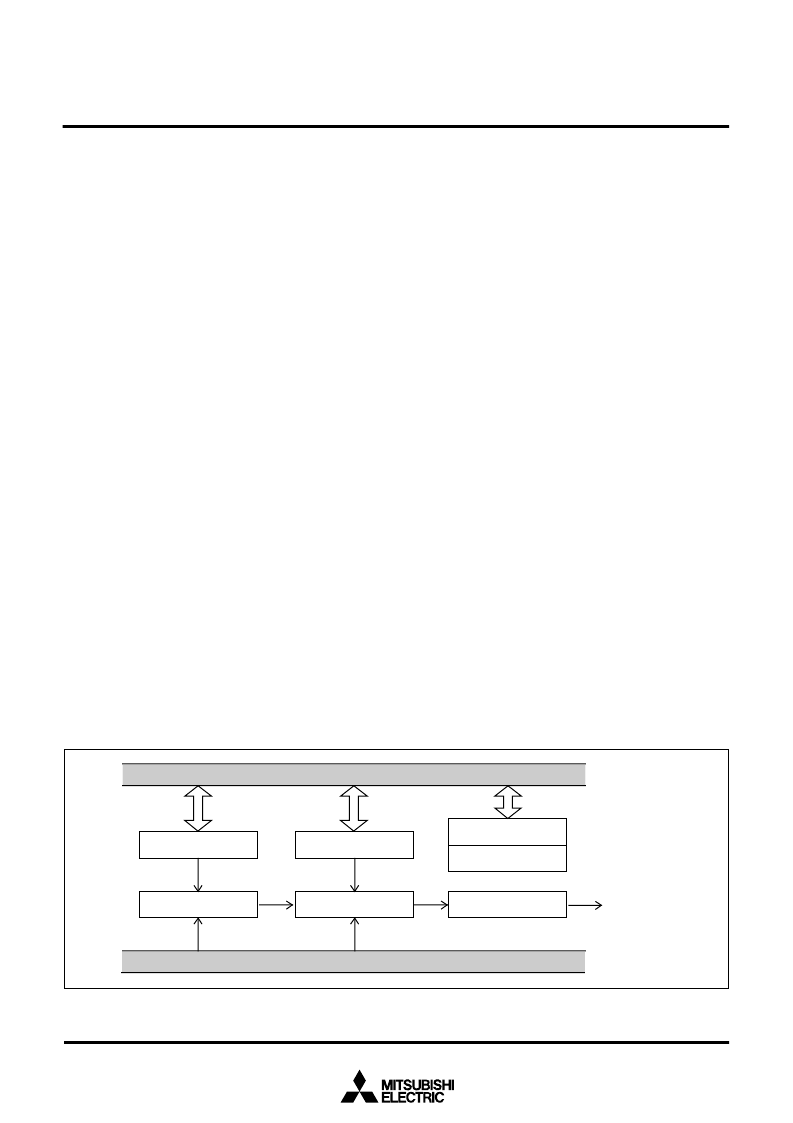- 您現(xiàn)在的位置:買賣IC網(wǎng) > PDF目錄370849 > M37902FCCHP (Mitsubishi Electric Corporation) SINGLE-CHIP 16-BIT CMOS MICROCOMPUTER PDF資料下載
參數(shù)資料
| 型號(hào): | M37902FCCHP |
| 廠商: | Mitsubishi Electric Corporation |
| 英文描述: | SINGLE-CHIP 16-BIT CMOS MICROCOMPUTER |
| 中文描述: | 單片16位CMOS微機(jī) |
| 文件頁(yè)數(shù): | 99/143頁(yè) |
| 文件大?。?/td> | 1463K |
| 代理商: | M37902FCCHP |
第1頁(yè)第2頁(yè)第3頁(yè)第4頁(yè)第5頁(yè)第6頁(yè)第7頁(yè)第8頁(yè)第9頁(yè)第10頁(yè)第11頁(yè)第12頁(yè)第13頁(yè)第14頁(yè)第15頁(yè)第16頁(yè)第17頁(yè)第18頁(yè)第19頁(yè)第20頁(yè)第21頁(yè)第22頁(yè)第23頁(yè)第24頁(yè)第25頁(yè)第26頁(yè)第27頁(yè)第28頁(yè)第29頁(yè)第30頁(yè)第31頁(yè)第32頁(yè)第33頁(yè)第34頁(yè)第35頁(yè)第36頁(yè)第37頁(yè)第38頁(yè)第39頁(yè)第40頁(yè)第41頁(yè)第42頁(yè)第43頁(yè)第44頁(yè)第45頁(yè)第46頁(yè)第47頁(yè)第48頁(yè)第49頁(yè)第50頁(yè)第51頁(yè)第52頁(yè)第53頁(yè)第54頁(yè)第55頁(yè)第56頁(yè)第57頁(yè)第58頁(yè)第59頁(yè)第60頁(yè)第61頁(yè)第62頁(yè)第63頁(yè)第64頁(yè)第65頁(yè)第66頁(yè)第67頁(yè)第68頁(yè)第69頁(yè)第70頁(yè)第71頁(yè)第72頁(yè)第73頁(yè)第74頁(yè)第75頁(yè)第76頁(yè)第77頁(yè)第78頁(yè)第79頁(yè)第80頁(yè)第81頁(yè)第82頁(yè)第83頁(yè)第84頁(yè)第85頁(yè)第86頁(yè)第87頁(yè)第88頁(yè)第89頁(yè)第90頁(yè)第91頁(yè)第92頁(yè)第93頁(yè)第94頁(yè)第95頁(yè)第96頁(yè)第97頁(yè)第98頁(yè)當(dāng)前第99頁(yè)第100頁(yè)第101頁(yè)第102頁(yè)第103頁(yè)第104頁(yè)第105頁(yè)第106頁(yè)第107頁(yè)第108頁(yè)第109頁(yè)第110頁(yè)第111頁(yè)第112頁(yè)第113頁(yè)第114頁(yè)第115頁(yè)第116頁(yè)第117頁(yè)第118頁(yè)第119頁(yè)第120頁(yè)第121頁(yè)第122頁(yè)第123頁(yè)第124頁(yè)第125頁(yè)第126頁(yè)第127頁(yè)第128頁(yè)第129頁(yè)第130頁(yè)第131頁(yè)第132頁(yè)第133頁(yè)第134頁(yè)第135頁(yè)第136頁(yè)第137頁(yè)第138頁(yè)第139頁(yè)第140頁(yè)第141頁(yè)第142頁(yè)第143頁(yè)

99
M37902FCCHP, M37902FGCHP, M37902FJCHP
SINGLE-CHIP 16-BIT CMOS MICROCOMPUTER
MITSUBISHI MICROCOMPUTERS
Fig 103. Block diagram of debug function
Address compare register 0
Address compare register 1
Debug control register 0
Matching
Compare register
Matching
Compare register
Address matching
detect circuit
Debug control register 1
Internal data bus (DB
0 to
DB
15
)
CPU bus (Address)
Address matching
detection interrupt
DEBUG FUNCTION
When the CPU fetches an instruction code, an interrupt request will
be generated if a selected condition is satisfied, as a resultant of
comparison between a specified address and the start address
where the instruction code is stored (the contents of PG and PC).
The decision whether this condition is satisfied or not is called ad-
dress matching detection, and the interrupt generated by this detec-
tion is called an address matching detection interrupt. (For interrupt
vector addresses, refer to the section on interrupts.)
In the address matching detection, a non-maskable interrupt routine
is proceeded without execution of the original instruction which has
been allocated to the target address.
The debug function provides the following two modes:
the address matching detection mode, which is used to avoid the
area where program exists or modify a program.
the out-of-address-area detection mode, which is used to detect a
program runaway.
Figures 103 shows the block diagram of the debug function. Figures
104 and 105 show the bit configurations of the debug control regis-
ters 0, 1, and address compare registers 0,1, respectively.
The detect condition select bits of the debug control register 0 can
select one condition between the following 4 conditions. When the
selected address condition is satisfied, an address matching detec-
tion interrupt request will be generated:
(1) Address matching detection 0
The contents of PG and PC match with the address which has
been set in the address compare register 0.
(2) Address matching detection 1
The contents of PG and PC match with the address which has
been set in the address compare register 1.
(3) Address matching detection 2
The contents of PG and PC match with the address which has
been set in either of the address compare register 0 or address
compare register 1.
(4) Out-of-address-area detection
The contents of PG and PC are less than the address which has
been set in the address compare register 0 or larger than the ad-
dress which has been set in the address compare register 1.
By setting the detect enable bit of the debug control register 0 to
“
1
”
,
an address matching detection interrupt request will be generated if
any one of the above address conditions is satisfied. Clearing the
detect enable bit to
“
0
”
generates no interrupt request even if any of
the above address conditions is satisfied.
The address compare register access enable bit of the debug con-
trol register 1 must be set to
“
1
”
by the instruction just before the ac-
cess operation (read/write). Then, this bit must be cleared to
“
0
”
(disabled) by the next instruction. While this bit =
“
0
”
, the address
compare registers 0, 1 cannot be accessed.
The address-matching-detection 2 decision bit of the debug control
register 1 decides, whether the address which has been set in the
address compare register 0 or 1 matches with the contents of PG,
PC, when the address matching detection 2 is selected. The con-
tents of this bit is invalid when address matching detection 0 or 1 is
selected.
In order to use the debug function to avoid the area where program
exists or modify a program, perform the necessary processing within
an address matching interrupt routine. As a result, the contents of
PG, PC, PS at acceptance of an address matching detection inter-
rupt request (i.e. the address at which an address matching detec-
tion condition is satisfied) have been pushed on to the stack. If a
return destination address after the interrupt processing is to be al-
tered, rewrite the contents of the stack, and then return by the RTI
instruction.
To use the debug function to detect a program runaway, set an ad-
dress area where no program exists into the address compare regis-
ters 0 and 1 by using the out-of-address-area detection. When the
CPU fetches instruction codes from this address area and executes
them, an address matching detection interrupt request will be gener-
ated.
The above debug function cannot be evaluated by a debugger, so
that the debug function must not be used while a debugger is run-
ning.
相關(guān)PDF資料 |
PDF描述 |
|---|---|
| M37902FGCHP | DIODE SCHOTTKY DUAL COMMON-ANODE 25V 150mW 0.32V-vf 200mA-IFM 1mA-IF 2uA-IR SOT-523 3K/REEL |
| M37902FJCHP | SINGLE-CHIP 16-BIT CMOS MICROCOMPUTER |
| M37905F8CFP | 16-BIT CMOS MICROCOMPUTER |
| M37905F8CSP | 16-BIT CMOS MICROCOMPUTER |
| M37905M4C | DIODE SCHOTTKY DUAL COMMON-ANODE 25V 200mW 0.32V-vf 200mA-IFM 1mA-IF 2uA-IR SOT-323 3K/REEL |
相關(guān)代理商/技術(shù)參數(shù) |
參數(shù)描述 |
|---|---|
| M37902FGCGP | 制造商:MITSUBISHI 制造商全稱:Mitsubishi Electric Semiconductor 功能描述:SINGLE-CHIP 16-BIT CMOS MICROCOMPUTER |
| M37902FGCHP | 制造商:MITSUBISHI 制造商全稱:Mitsubishi Electric Semiconductor 功能描述:SINGLE-CHIP 16-BIT CMOS MICROCOMPUTER |
| M37902FJCHP | 制造商:MITSUBISHI 制造商全稱:Mitsubishi Electric Semiconductor 功能描述:SINGLE-CHIP 16-BIT CMOS MICROCOMPUTER |
| M37903S4CHP | 制造商:RENESAS 制造商全稱:Renesas Technology Corp 功能描述:16-BIT CMOS MICROCOMPUTER |
| M37905F8CFP | 制造商:MITSUBISHI 制造商全稱:Mitsubishi Electric Semiconductor 功能描述:16-BIT CMOS MICROCOMPUTER |
發(fā)布緊急采購(gòu),3分鐘左右您將得到回復(fù)。